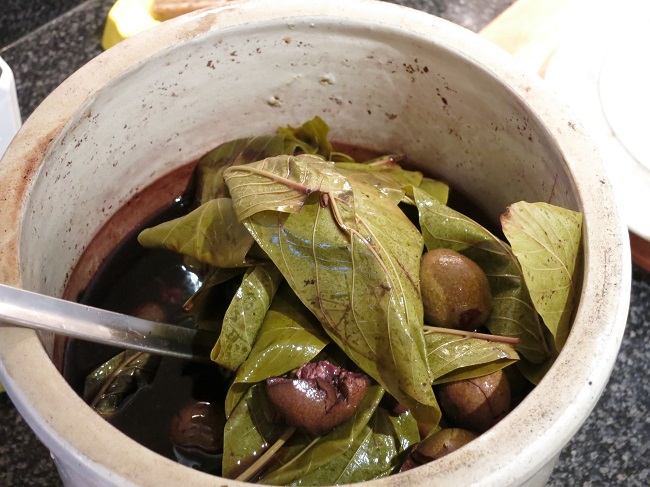
As described in an earlier post, last June I put some green walnuts and leaves to macerate on red wine. A few spices, some bay leaves and a piece of dried orange peel made up the rest of the ingredients, then the whole was safely tucked into an old sauerkraut crock, was tucked into a cool cellar (the storage area in the basement of our condo, to tell the truth) for about 6 weeks.
This was the first step in my project to make vin de noix, a fortified wine that has its roots in the walnut-rich countryside of the French southwest. With a rich, nutty earthiness and a slightly oxidized character, vin de noix makes a nice aperitif when poured over ice, or a sweet wine at the end of a meal with dessert or cheese. Basically it fills a similar role that an aged port might play.
I finally got around to finishing up this batch of vin de noix in early August. By “finishing”, I mean that after taking on the flavor of the green walnuts during maceration, the wine is ready to be fortified with a alcohol and sugar, then bottled. I have included some photos of the process below.
The next step requires the least work: waiting for about 5-6 months to let the alcohol mellow and the flavors of balance. For that, the bottles go back into my cool storage space, to slumber quietly until the end of the year.
Check out my recipe for vin de noix here.






